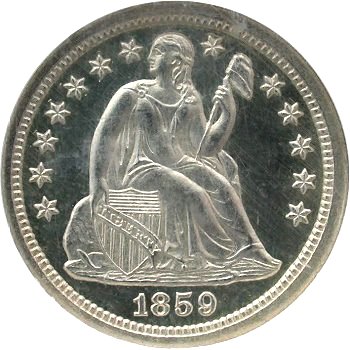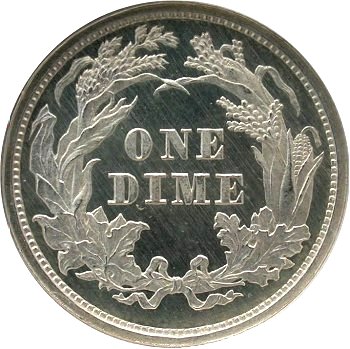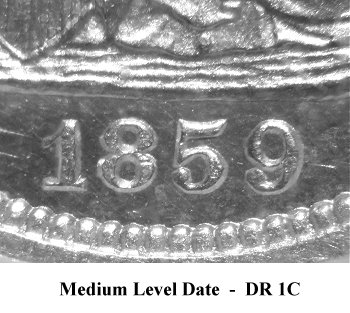

|
|
|
1859
Transitional Pattern
Obverse: Proof Die, Medium Level Date
Reverse: Proof Die, Perfect Die


Obverse 1 Reverse A
Obverse Diagnostic Point

Comments: The obverse type of 1859 (DR 1C) paired with reverse of 1860. Listed as Judd 233 and Adams-Woodin 309. The term "Transitional" has been given since our country's name, UNITED STATES OF AMERICA, was moved from the obverse to the reverse between 1859 to 1860. Since this coin or pattern was struck with the With Stars obverse of 1859 and a Legend reverse of 1860, no mention of UNITED STATES OF AMERICA appears on the coin. Ahwash estimated that there are 12 surviving examples. Coin dealer Jim O'Donnell indicated that he once owned a hoard of 9 examples and estimates the surviving population to be at least 15. The PCGS population report indicates that 12 transitional patterns have been graded while NGC reports a total of 9 examples graded.
Both Breen and Kam Ahwash suggest that the 1859 Transitional dime is a "Piece De Caprice" or favor coin made to satisfy the demands of collectors through Snowden's little eccentricity of 1860 . Ahwash questions whether the pieces were struck in 1859 or in 1860 as Snowden admitted to the coining of 100 favor pieces of transitional half dimes (Judd 232) in 1860, with the 1859 dimes possibly being included. He further speculates that a still later origin might be possible, as late as 1867 or 1868 under the "chicanery-ridden establishment of Dr. Linderman".
An investigation of previous auction appearances of 1859 Transitional Patterns from catalogs in my possession produced these listing;
Re-sold Heritage 2001 Long Beach Signature Sale as Lot 6041 PCGS PF64, Gulf Coast Collection, "An obviously important near-Gem, the surfaces are framed in olive-russet peripheral toning with lighter, lilac tinged highlights in the centers. Razor sharp striking definition and broad rims are noted on both sides."
Plate Coin: Former G. Fortin Collection, NGC PF67 Star Cameo